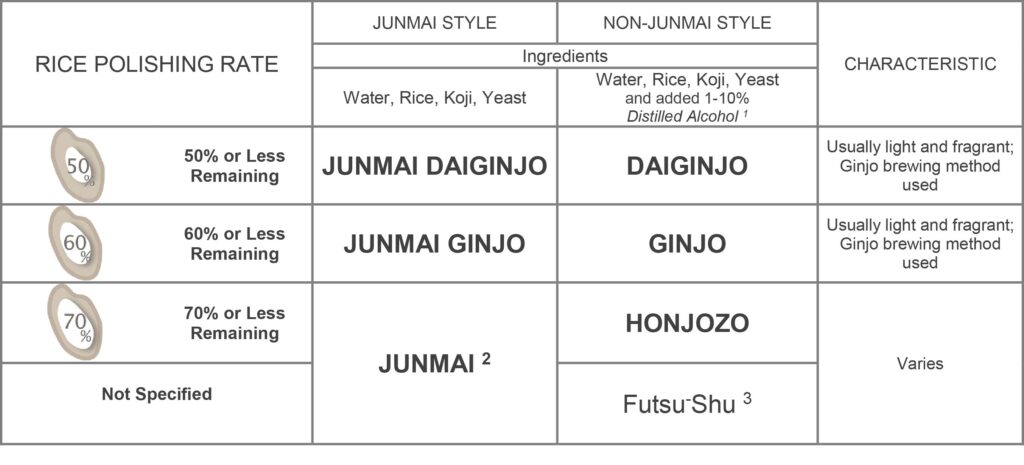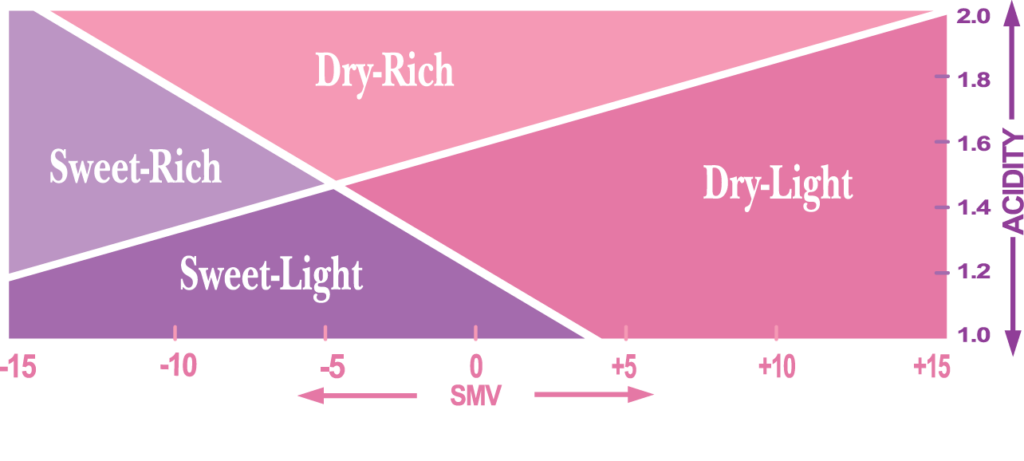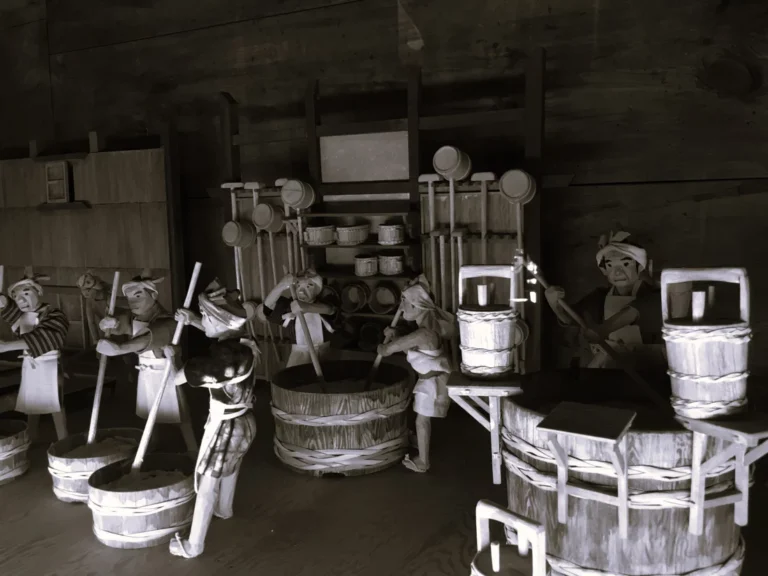Sake in General
As the national beverage of Japan it is consumed by every class in society, and is enjoyed at various events ranging from private business dinners to public festivals and religious ceremonies. Almost every region in Japan has a brewery which produces sake that is unique to that area, and the way sake is produced today still follows the methods of the past.
Ingredients
4 Key Ingredients in Sake Making

WATER
The quality of water can affect the quality of sake.
Hard Water: Dry, Crisp Sake (Rich in minerals and trigger vigorous, quick fermentation)
Soft Water : Soft, luscious sake (Slower fermentation process)
Sake breweries are located in areas with excellent source of natural spring water.
RICE
Sake uses only the core starch of the rice.
Sake rice is not a table rice. Sake rice has bigger and more dense Starch content.
KOJI (Aspergillus Oryzae)
Converts the starch of rice to sugar.
The mold (or spore) that produces a variety of enzymes while growing on steamed rice. When finished growing, koji looks like rice with a touch of frosting.
YEAST
A fungi that turns sugar into alcohol.
Sake-brewing yeast is cousin to the yeast used to brew wine and beer,but it is far more potent and can produce an alcohol level of 20 %.

Type of Sake

1. Adding distilled alcohol does not make a sake lower grade; it is part of one manner of brewing that produces specific results (like lighter, more fragrant sake with a more robust structure and longer shelf life).
2. Until recently, rice used for Junmai had to be at least 30% polished. Due to changes in Japanese law, Junmai no longer requires a specified polishing rate. Nevertheless, the amount of polishing must be listed somewhere on the label.
3. Futsu-shu refers to sake which does not fit into the premium classification (Daginjo, Ginjo, Honjozo). A sake would be classified as “Futusu-shu,” for example, when the amount of distilled alcohol added exceeds 10%, or when a sweetener or acidifier is added.
Polishing Rate
When harvested, all rice is brown rice. Sake is made from the starches in the center of the grain. Surrounding the starchy center are lipids, proteins, and minerals that cause off aromas and flavors. The outer part of the grain, including the husk, must be polished away before it can be used for brewing sake.

Dry or Sweet?

SMV (Sake Meter Value)
A representation of the hydrometer is used to measure density and flavor (Nihonshu- Do) of sake. It is often printed on its label with the values presented in a horizontal scale. Higher numbers represent “dry” and lower numbers represent “sweet”.

Ways to enjoy sake
With Wine Glass
You can enjoy drinking sake with wine glasses to expand not only the taste, but the aroma as well. Due to the fruity aroma that comes from ginjo and daiginjo style sake, such as MIZUBASHO and NINKI-ICHI, wine glasses enhances more sweetness and UMAMI. Please try it out and you will be amazed and satisfied.
Warm Sake
Not all sake is meant to be drunk warm, but KENBISHI is one of those exceptions. Not only KENBISHI can be serve warm and enjoyed by sake experts, it is also enjoyed by many sake enthusiasts. As more people experienced and learn about sake, one will find that not only premium sakes could be enjoyed chilled, but they could also be enjoyed warm.
How to make Warm Sake
- 1. A small pan halfway with water. Bring to a boil, and then lower the heat to a minimum.
- 2. Pour enough sake into the tokkuri (sake jug/pitcher) so it is three-quarters full. Place tokkuri in the pan of water for about 5 minutes or until the sake has warmed to your preference.
- 3. Check the temperature by lifting the tokkuri and touching the bottom. Traditionally the bottom of the tokkuri is indented in the center. If the center feels warm enough to satisfy one’s own preference, it is ready to enjoy.(You can also use a microwave to warm up the sake.)
